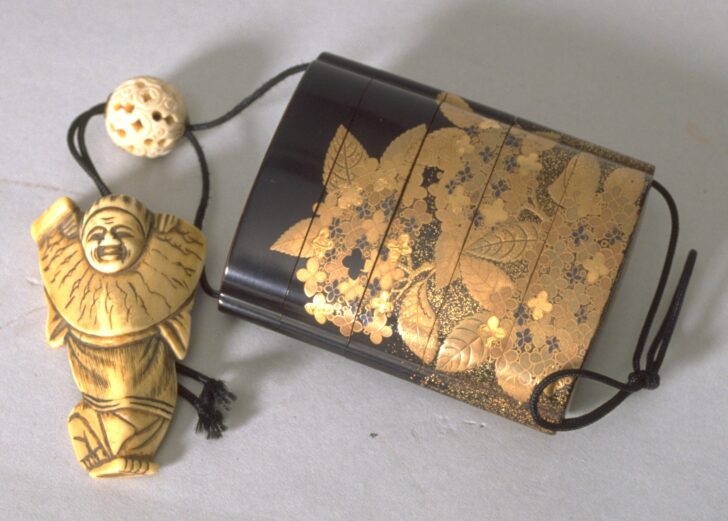Inro (four-case medicine box), ojime, and netsuke of Hanshan?
Japanese

Description
Gallery Rotations Fall 2012
Inrô with ojime and netsuke
Japan, Edo period (1615–1868)
19th century
Lacquer on wood with gold and silver maki-e, and ivory ojime
and netsuke
Transfer from the College of Architecture and Design, 1972/2.103
Inrô, small, stacked medicine boxes held together by a cord and secured by a bead, are the Japanese solution to a lack of pockets in a man’s kimono. The ojime is a bead that tightens the cords to hold the parts of the inrô together. The cord is tucked under the obi or sash, and held in place by a netsuke (literally, a “root”) at the other end. As personal fashion accessories for men, inrô and netsuke can be quite elaborate. In this example, the inrô is decorated in dazzling gold and other metallic pigments with hydrangea blossoms and lotus leaves, refreshing images for the heat of deep summer. The netsuke is a comical figure of a man, perhaps meant to be the Zen eccentric and Chinese poet Hanshan, holding up a long scroll of calligraphy.
Usage Rights:
If you are interested in using an image for a publication, please visit https://umma.umich.edu/request-image/ for more information and to fill out the online Image Rights and Reproductions Request Form.